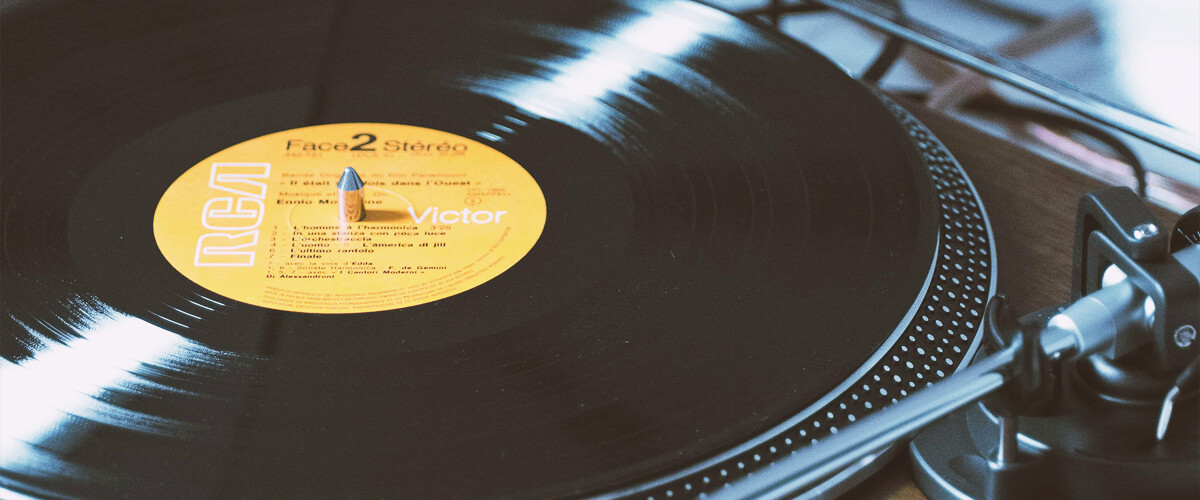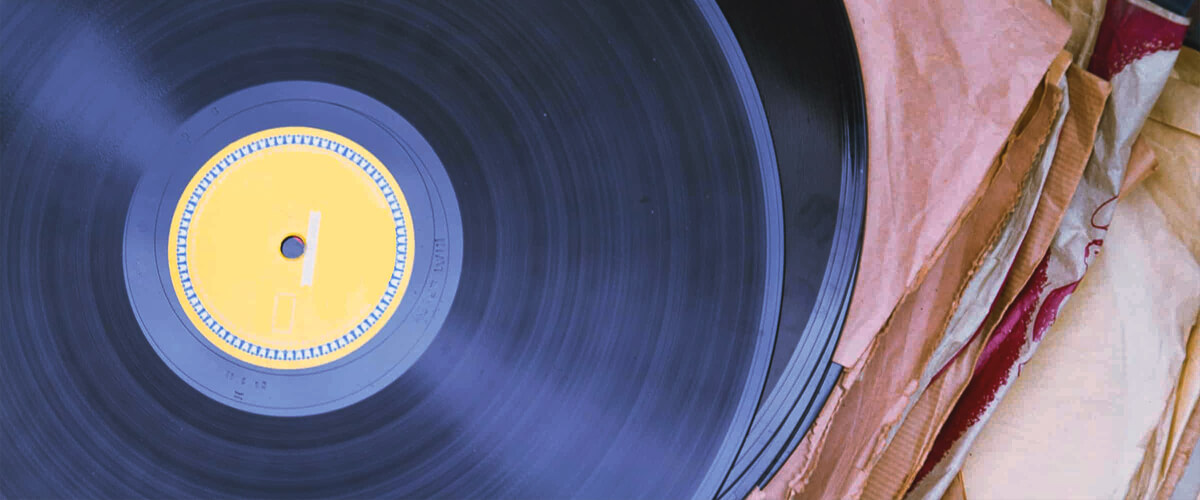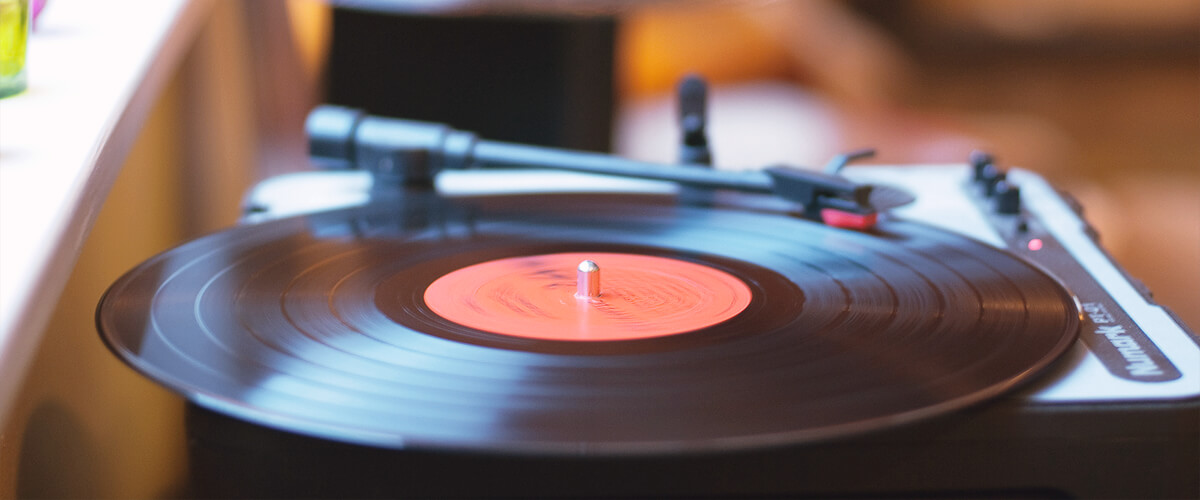Vinyl records are experiencing a resounding revival in the modern music landscape. But why are vinyls so expensive, and what determines the price tags attached to them? Join me on a journey of unraveling influences that sway the cost of vinyl records, from rarity and demand to production techniques and collector’s allure. Discover how various factors set the stage for the pricing of vinyl records’ empire.
The evolution of vinyl record pricing

The cost of vinyl records has undergone significant evolution over the decades, influenced by various factors such as technology advancements, market demand, production costs, and cultural trends. Let’s explore the key stages of changes in vinyl record pricing.
A look back: pricing trends over the past 50 years
Early years (late 1940s to 1950s). 78 RPM records were the primary format for music, relatively expensive to produce due to the materials and limited manufacturing capabilities. As a result, vinyl records were priced at a premium.
Vinyl’s golden era (1960s to early 1980s). With the rise of stereo and LP records in the 1960s, vinyl records’ pricing saw a decline due to improved production processes, economies of scale, and increased competition among record labels. Vinyl records became more accessible.
Vinyl decline and the rise of CDs (late 1980s to 1990s). As consumers embraced a new digital format, vinyl sales declined sharply, and record production reduced significantly. This led to a decrease in vinyl record availability, and collectors’ items started to gain value among music enthusiasts.
Vinyl resurgence (late 2000s to present). As the demand for vinyl records increased, record labels began producing new vinyl releases, and used vinyl sales surged in the collector’s market. Consequently, the pricing of both new and vintage vinyl records escalated, with limited edition pressings and rare releases commanding premium prices.
Significant factors that have influenced price changes
These factors vary across different periods and contribute to the fluctuations in vinyl record pricing. Some of the key factors I include:
- Supply and demand: When there is a high demand for a particular record or limited edition pressing and a limited supply available, the price tends to increase.
- Rarity: Records that were produced in limited quantities, were not widely distributed, or have become out of print can become highly valued by collectors.
- Condition: Records in mint or near-mint condition are generally more valuable than those with visible wear, scratches, or damaged sleeves.
- Artist and album popularity: Records by well-known and highly influential artists or iconic albums often have higher prices.
- Pressing editions: First pressings of vinyl records are often more desirable among collectors, leading to higher prices for these early releases.
- Quality: Audiophiles often seek records pressed on high-quality vinyl, which can impact pricing.
- Economic factors: During periods of economic prosperity, consumers may have more disposable income to spend on vinyl records, impacting prices.
Understanding the current pricing of vinyl records

As the vinyl record market continues to evolve, these factors will continue to shape the pricing landscape, creating a dynamic and exciting space for collectors and music enthusiasts. I can name at least 5 aspects that influence today’s vinyl records prices:
- Genre trends: The popularity of specific music genres or musical trends can influence vinyl record pricing.
- Collector’s market: The presence of dedicated vinyl collectors and enthusiasts significantly impacts the pricing of rare records. Passionate collectors are willing to pay over the average price of a vinyl record to fulfill their collections.
- Supply and distribution: Limited availability or production delays can impact pricing for certain releases.
- Vinyl revival: The resurgence of interest in vinyl records in recent years has driven up demand and, in turn, affected pricing as more people collect vinyl.
- Geographic location: Vinyl record prices can vary depending on the region or country. Factors like shipping costs, import/export fees, and regional demand can influence the differences.
The average price of vinyl records: a current analysis
The prices of new vinyl releases generally range from around $20 to $40, with special editions or deluxe versions priced much higher. Prices for limited editions range from $50 to several hundred dollars or even more in the collector’s market.
For used vinyl records, the prices vary based on factors like the record’s condition, age, rarity, and desirability among collectors. You can typically find them in the $5 to $20 range. Vintage or classic albums by well-known artists may range from $20 to $50 or more.
Breaking down the cost of a vinyl record

Various factors influence the cost of a vinyl record, each contributing to the final retail price. Before claiming that the vinyl record is too costly, I recommend exploring a breakdown of the main components that affect the price of a vinyl record.
The cost of raw materials
- Vinyl compound: The main raw material is a vinyl compound, typically made of PVC resin mixed with various additives and stabilizers. The cost of the vinyl compound can vary based on the quality and purity of the PVC used.
- Labels and packaging materials: The printed stickers on the center of the vinyl record and packaging materials (sleeves, covers, inserts) are additional raw materials that contribute to the overall cost.
- Paper and cardboard: These are used for printing album artwork, inner sleeves, and outer packaging. The cost depends on the quality and weight of the paper used.
- Inks and printing: The price depends on the printing method, where digital printing often being more cost-effective for smaller print runs and complex artwork. The number of colors used in the artwork and the complexity of the design can also affect printing costs. More colors and intricate artwork may require additional setup and printing time, increasing the overall cost.
- Plating and mastering: Plating involves creating metal stampers from the original master recording. Mastering involves the final adjustments and preparation of the audio for vinyl pressing. While not traditional raw materials, these processes are essential to vinyl record manufacturing and contribute to its cost.
The cost of manufacturing and production
In addition to the previously described aspects affecting the price of vinyl records, labor costs can be added, which include wages of workers involved in the production process, such as machine operators, quality control personnel, and packaging staff.
There are also overhead expenses, such as rent, utilities, maintenance, and administrative costs, which are part of the overall production cost.
Ensuring quality control throughout the manufacturing process is essential to producing high-quality vinyl records. Quality control measures can add to the production cost.
If the vinyl record features copyrighted music or artwork, licensing fees or royalties may be incurred and factored into the production cost.
The role of distribution, retail, and marketing
These aspects are essential for making vinyl records accessible to consumers, promoting sales, and creating awareness about releases, and I suggest you explore the role of each:
- Distribution: It involves the process of getting vinyl records from manufacturers to various retail outlets and customers. This includes both physical distribution (shipping vinyl records to brick-and-mortar stores) and digital distribution (making vinyl records available for online purchase). Effective distribution ensures that vinyl records are widely available to potential buyers, regardless of their location.
- Retail: Retailers, whether physical record stores or online platforms, act as intermediaries between the vinyl record manufacturers and the consumers. They provide a platform for customers to discover and purchase vinyl records. Record stores offer a curated selection of vinyl records, allowing you to explore new releases and discover hidden gems. Online retailers provide convenience and accessibility for customers to browse and buy vinyl records from the comfort of their homes.
- Marketing: Special marketing strategies can include advertising campaigns, social media promotion, email newsletters, press releases, and collaborations with influencers or music publications. Effective marketing campaigns help generate excitement and anticipation around vinyl records, attracting potential buyers and encouraging sales.
The impact of limited pressings and collector’s editions
Limited pressings and collector’s editions create a sense of exclusivity and rarity, generating a higher demand among collectors who seek to own unique and special releases. The allure of limited pressings can also lead to a spike in sales and revenue for record labels and artists.
Record labels and artists strategically use limited pressings and collector’s editions as marketing tools. Such releases help promote the artist’s brand and create excitement around their music.
Limited pressings and collector’s editions contribute to the preservation of physical media in the digital age. They attract consumers who appreciate the experience of owning vinyl records. Resale prices can exceed the original retail price, especially for highly desirable and rare editions.
Future trends: will vinyl records become more affordable?

Limited pressings, collector’s editions, and special releases drove excitement and demand, increasing prices for certain vinyl records. It’s possible that the vinyl record market will continue to evolve, and pricing may be influenced by factors such as the continued growth of vinyl’s appeal, the availability of new and vintage releases, the emergence of new artists, and advancements in vinyl production technology. However, nothing can be compared with the authenticity of the original vinyl record, which obviously won’t be affordable.
The impact of technological advancements on vinyl production
Automated and computer-controlled presses have replaced older manual presses, resulting in higher-quality records with fewer defects. Advanced software and equipment allow for precise adjustments to the audio signal, optimizing it for vinyl playback and reducing potential issues like surface noise.
Digital-to-vinyl transfer technologies allow music producers to create vinyl records directly from digital audio files. This process eliminates intermediate steps and potential quality loss during analog tape transfers, allowing a more accurate representation of the original digital recording.
Advancements in vinyl cutting technology have made it possible to produce custom vinyl records in smaller quantities. This flexibility allows independent artists and labels to release vinyl records without the need for large production runs.
Nowadays, vinyl records have become more diverse with colored vinyl, picture discs, holographic elements, and etchings. Digital printing and design advancements have revolutionized vinyl record packaging as well. Labels can now create intricate and eye-catching artwork for album covers and sleeves, enhancing the overall aesthetic appeal of vinyl releases.
The progress of technologies transforms the process from a traditional method to a more streamlined and efficient operation. This significantly makes the price of vinyl records cheaper. However, we also have to consider that some technologies can be revolutionary, and this also can make the price higher.












![Connect a Turntable to Your Wireless Bluetooth Speakers [Easy Guide]](https://www.vinylrecordday.org/wp-content/uploads/2021/12/tuntable-and-sonos-speaker-300x150.jpg)

